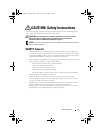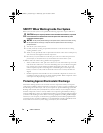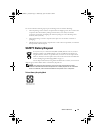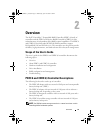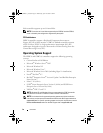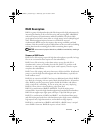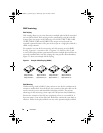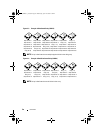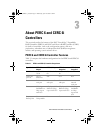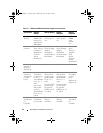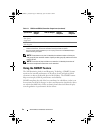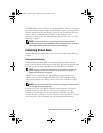
18 Overview
RAID Terminology
Disk Striping
Disk striping allows you to write data across multiple physical disks instead of
just one physical disk. Disk striping involves partitioning each physical disk
storage space into stripes of the following sizes: 8 KB, 16 KB, 32 KB, 64 KB,
128 KB, 256KB, 512KB, and 1024KB. These stripes are interleaved in a
repeated sequential manner. The part of the stripe on a single physical disk is
called a stripe element.
For example, in a four-disk system using only disk striping (used in RAID
level 0), segment 1 is written to disk 1, segment 2 is written to disk 2, and
so on. Disk striping enhances performance because multiple physical disks are
accessed simultaneously, but disk striping does not provide data redundancy.
Figure 2-1 shows an example of disk striping.
Figure 2-1. Example of Disk Striping (RAID 0)
Disk Mirroring
With mirroring (used in RAID 1), data written to one disk is simultaneously
written to another disk. If one disk fails, the contents of the other disk can be
used to run the system and rebuild the failed physical disk. The primary
advantage of disk mirroring is that it provides 100 percent data redundancy.
Because the contents of the disk are completely written to a second disk, it
does not matter if one of the disks fails. Both disks contain the same data at
all times. Either of the physical disks can act as the operational physical disk.
Stripe element 1
Stripe element 5
Stripe element 9
Stripe element 2
Stripe element 6
Stripe element 10
Stripe element 3
Stripe element 7
Stripe element 11
Stripe element 4
Stripe element 8
Stripe element 12
Dell_PERC6.1_UG.book Page 18 Wednesday, April 15, 2009 4:18 PM




